Switzerland’s best-kept secret is its wines
Sign up now: Get ST's newsletters delivered to your inbox
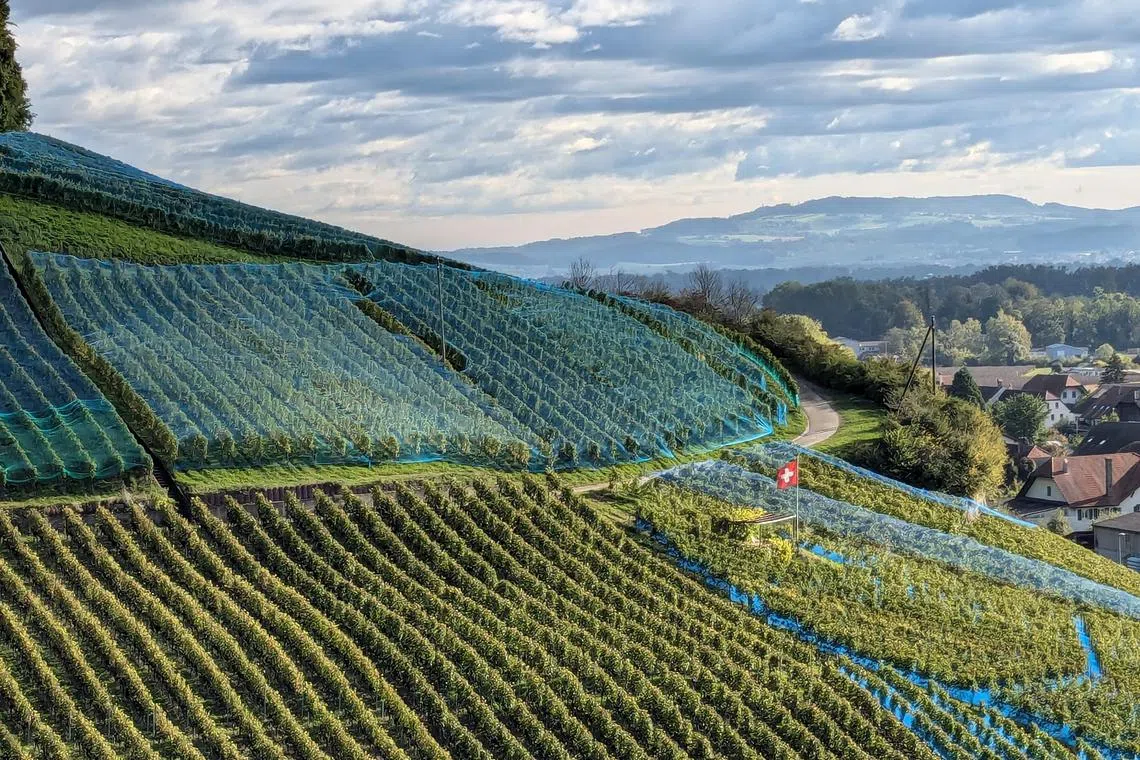
A vineyard in Mont-Vully in the Three Lakes wine region in West Switzerland.
PHOTO: KENNETH S.Z. GOH
Kenneth S.Z. Goh
Follow topic:
SWITZERLAND – I am panting in a verdant vineyard in Mont-Vully, a municipality in west Switzerland, where bunches of grapes peek out from canopies of leaves in the manicured rows of vines sprawled across the hills.
It is the thick of harvest season in late September 2024, so I have been handed a pair of harvesting shears. The task? Snip off as many pinot gris grapes as possible from the vines that stretch dauntingly ahead.
After 30 minutes of squatting and shuffling – with a couple of juicy grapes popped into my mouth – I am ready to call it a day with my box that is a quarter filled with grapes.
My defeated spirit is inadvertently lifted as I shift my focus from the grapes to the magnificent hilltop view – a sea of greenery dotted with villages along the banks of a shimmering Lake Murten set against the alpine mountains.

Mr Cedric Guillod, the fourth-generation owner of Cave Guillod, with the traditional Gateau du Vully.
PHOTO: KENNETH S.Z. GOH
Soaking up this sun-drenched scenery are vines of traminer and chasselas, among the 45 types of grapes grown in Mont-Vully, where the estate of Cave Guillod resides in Three Lakes – one of the country’s six wine-growing regions.
Cave Guillod is one of the 23 family-run wine enterprises in a 15ha plot in Mont-Vully, a short drive from Avenches, the former capital of Roman Helvetia, where wines were first introduced to Switzerland in the second century AD.
The 93-year-old organic winery produces seven types of wines from 12 grape varieties, including the Celeste, a crisp and citrusy blend of pinot gris and chasselas, the emblematic Swiss white grape that is grown mainly in Vaud, Valais and Geneva.
After harvesting, I join Cave Guillod’s fourth-generation owner, Mr Cedric Guillod, for a tavolata at the heart of his vineyard. Over a wind-swept outdoor lunch of filet mignon, spaghetti, salad and Gateau du Vully, a focaccia-like flatbread made with turmeric and bacon, I learn about the workings of the wine estate.
Mr Guillod says that wine tourism activities, including cellar tastings and harvesting activities from August to October, comprise half of his business.
He adds: “Besides providing a stable source of income, it is a great opportunity to explain our wine-making culture and philosophy. We don’t want to export our wines and increase production. Instead, we hope to attract more people to experience our wines in our vineyards.”
Sip and stay
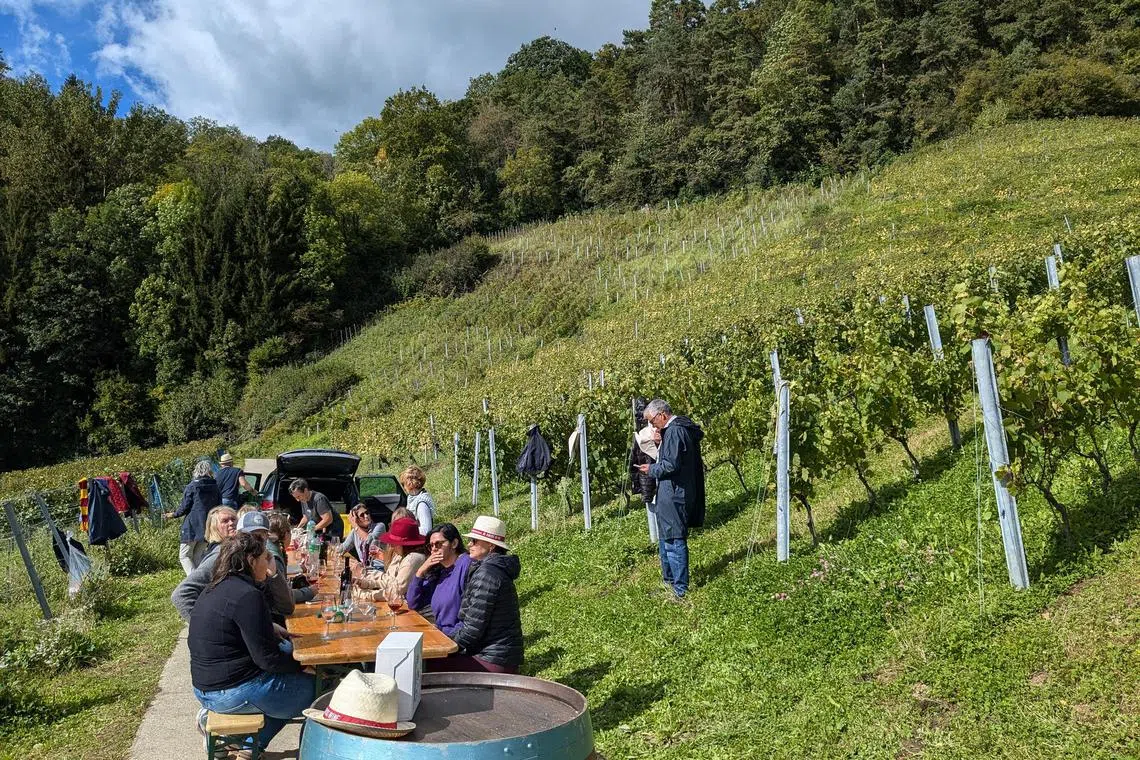
A tavolata in the Cave Guillod vineyard in Mont-Vully.
PHOTO: KENNETH S.Z. GOH
Switzerland is adopting a sip-and-stay approach to spread the word on its best-kept secret: wines. The affluent country is internationally renowned for watches, chocolates and cheeses. Its wines, however, are relatively unheard of compared with those from its neighbours – France, Germany and Italy.
Switzerland is home to more than 250 grape varieties, most notably pinot noir, chasselas, gamay and merlot. These are cultivated in diverse terroir – from the vertiginous terraced vineyards of Lavaux, a Unesco World Heritage Site, to Ticino, which basks in the warm Mediterranean climate.

The terraced vineyards at Lavaux are a Unesco World Heritage Site.
PHOTO: MONTREUX-VEVEY TOURISM/MARIECONTRERAS
Thanks to a substantial wine-drinking culture – an average Swiss adult drinks around 33 litres annually – Swiss wines are mainly consumed domestically.
According to Swiss Wine Promotion, the country’s national promotion body for wines, Switzerland produced 100 million litres of wine in 2023, but only 1 per cent was exported. Key markets include Germany, France, the United States and Japan, and demand is making inroads in Singapore.
Many of the 15,000 Swiss wineries are multi-generational and independent. To maintain the quality of wines, they do not have any aspirations of mass production.
Instead of exporting wines, Switzerland hopes to raise the awareness of its wines through experiences such as vineyard visits, wine cruises and stays in unique accommodation options in the picturesque wine regions.
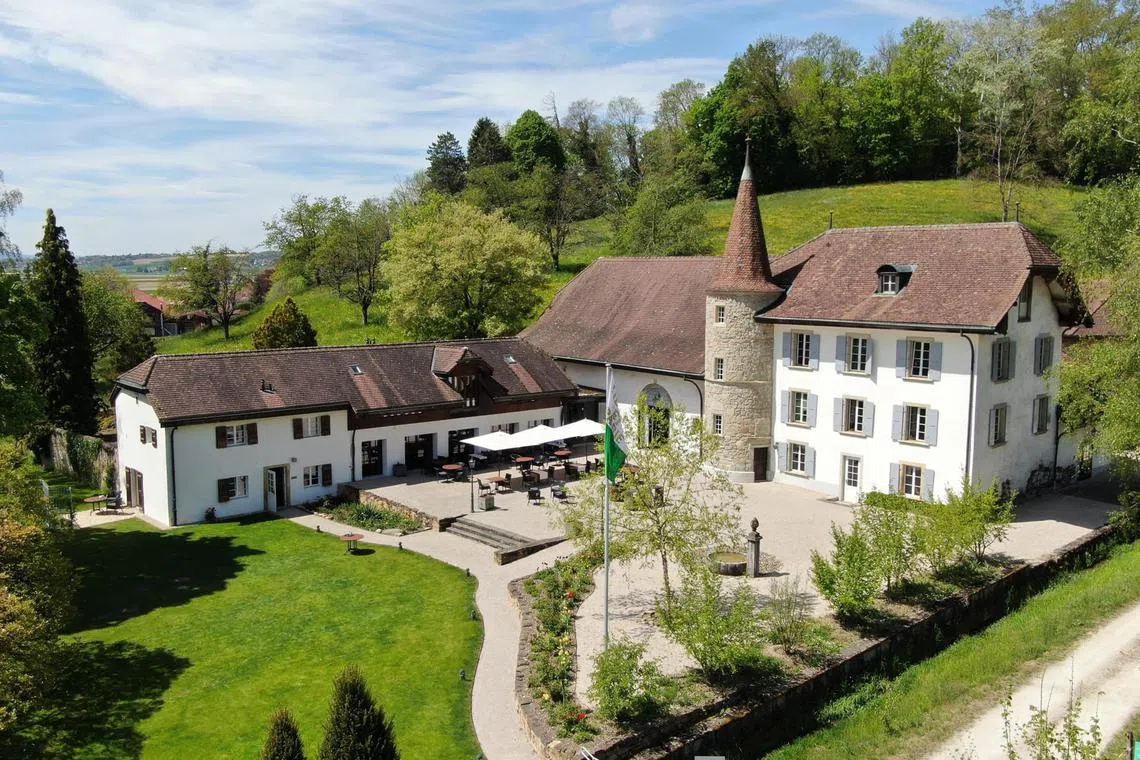
Chateau Salavaux is a 17-room hotel converted from a 16th-century mansion.
PHOTO: CHATEAU SALAVAUX
In Salavaux, I get a taste of countryside life at Chateau Salavaux, a 17-room hotel converted from a 16th-century mansion, where I wake up to views of cattle roaming around the nearby forest.
The hotel, located a short drive from the Mont-Vully wineries, stocks locally produced wines, while its restaurant serves dishes made with seasonal ingredients from the neighbouring farms in its candle-lit wine cave.
Love for the land
Ms Gaby Gianini and her husband, Mr Maurizio Merlo, have also adopted the sip-and-stay approach through their 150ha wine estate and farm, Tenuta Castello di Morcote. It sits atop one of Switzerland’s prettiest cobblestone villages, Morcote in Ticino.
Besides running the historic vineyard, which is anchored by the imposing Morcote Castle that dates back to the 15th century, the couple also run Relais Castello di Morcote, a 12-room boutique hotel which was a 17th-century convent that overlooks Lake Lugano.
My room has all the trappings of a luxury hotel, such as a plush bed and lounge chairs, within a towering, well-preserved wooden coffered ceiling emblazoned with flower motifs. Besides the hotel, which is an eight-minute walk to the vineyard, the estate also has a grotto-style restaurant, Vicania, carved out from an old stone farmhouse on top of a hill.
Mr Merlo says: “We want to be a food and wine destination where people can spend a couple of days in our compound to experience nature and learn about our wines better.”
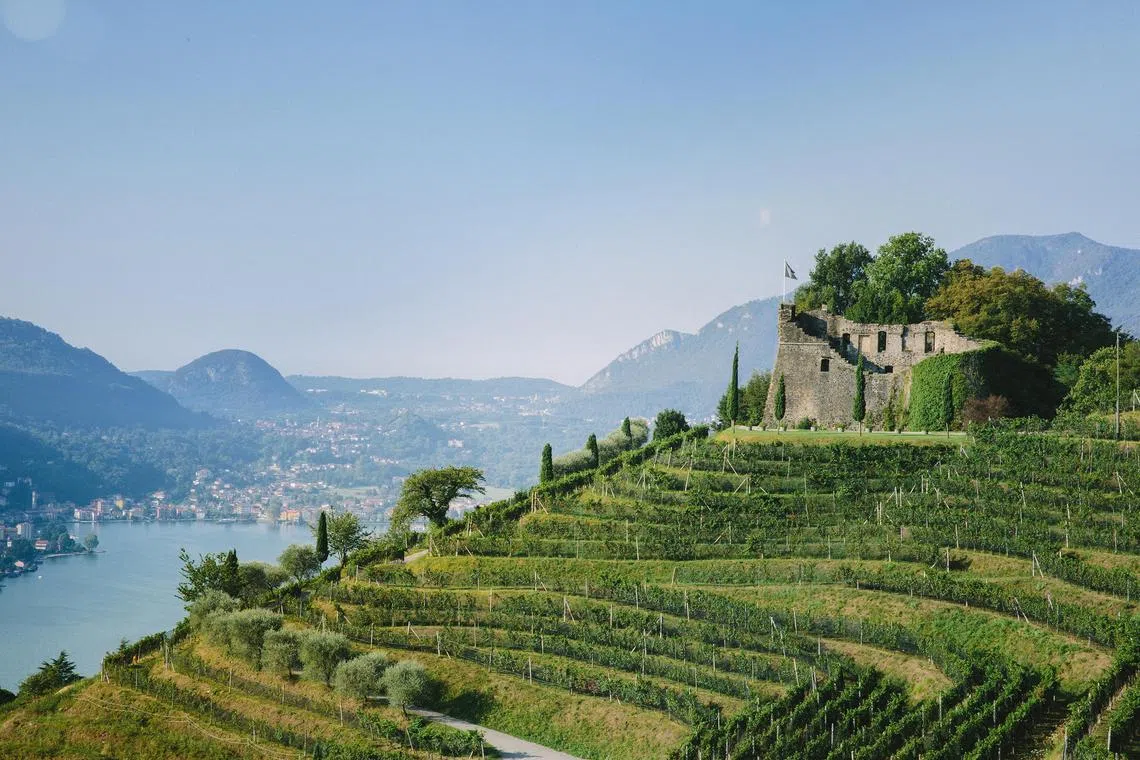
Tenuta Castello di Morcote wine estate in Ticino.
PHOTO: TENUTA CASTELLO DI MORCOTE
At the Tenuta Castello di Morcote wine estate, the terraced vineyard is spread across a lake-front promontory around 400m above sea level. The organic and biodynamic winery produces more than 60,000 bottles of wines annually, of which 80 per cent contain Merlot, which is synonymous with Ticino.
Among its nine labels, signatures include the Merlot-driven Castello di Morcote Riserva, which boasts an intense aroma of red fruit and spices, a fruit-forward flavour and solid tannins.
Ms Gianini lives by the motto: Happy vines make great wines. Much of the winery’s success lies in its mineral-rich soil, which contains rose porphyry, a quartzite formed by volcanic activity 200 million years ago. Such soil results in wines that tend to be vibrant and fruity.
Thermal winds from the lake and the cool breeze that wafts off the slopes, fringed by wild thyme and olive tree shrubs, also contribute to the vines’ growth.
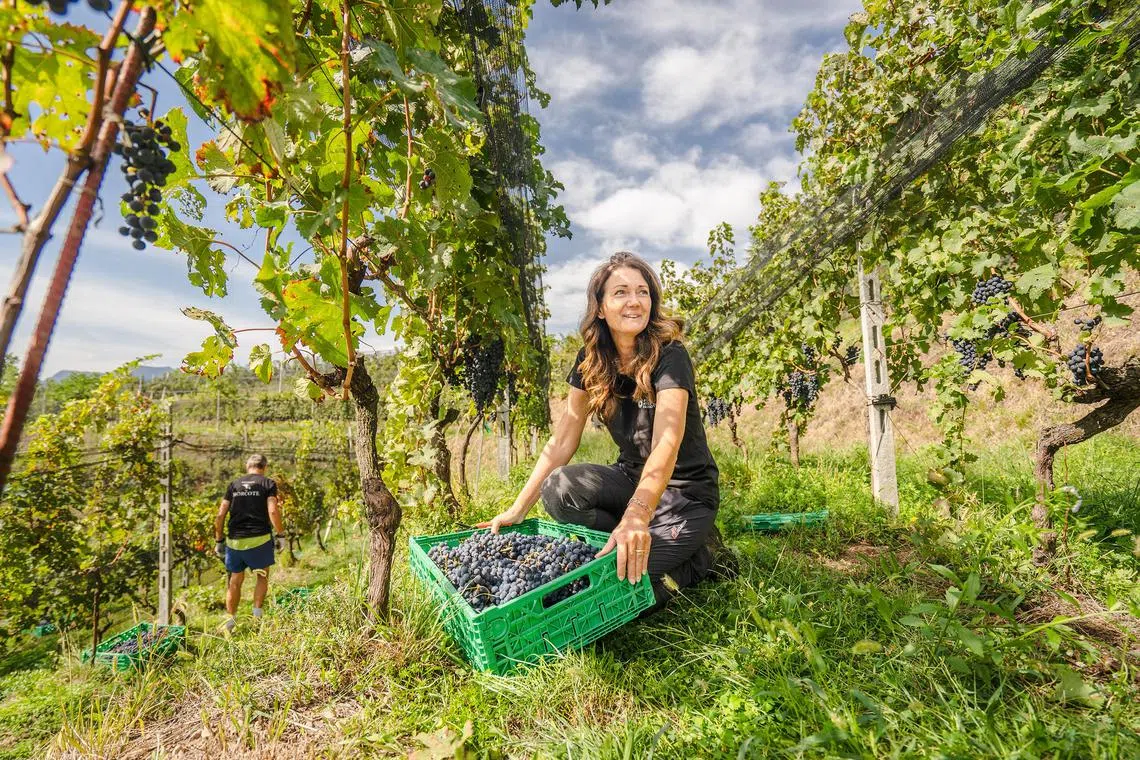
Ms Gaby Gianini, chief executive and owner of Tenuta Castello di Morcote.
PHOTO: TENUTA CASTELLO DI MORCOTE
The tour continues with a trip to the sleek solar-powered cellar, which is loaded with oak barrels of aged wines.
In addition to tours and tastings, Tenuta Castello di Morcote also offers wine-and-dine experiences. The wine-pairing menu features seasonal vegetables, herbs and flowers from the organic garden, as well as honey and olive oil produced in the estate.
At a wine-tasting session, Ms Gianini lets on that she almost lost this slice of paradise, which her family has owned since the 1940s.
The odds were stacked against her when she pleaded with her grandfather to let her take over the estate in 2009. The art and literature graduate knew nothing about wine-making then, but had a deep desire to do something.
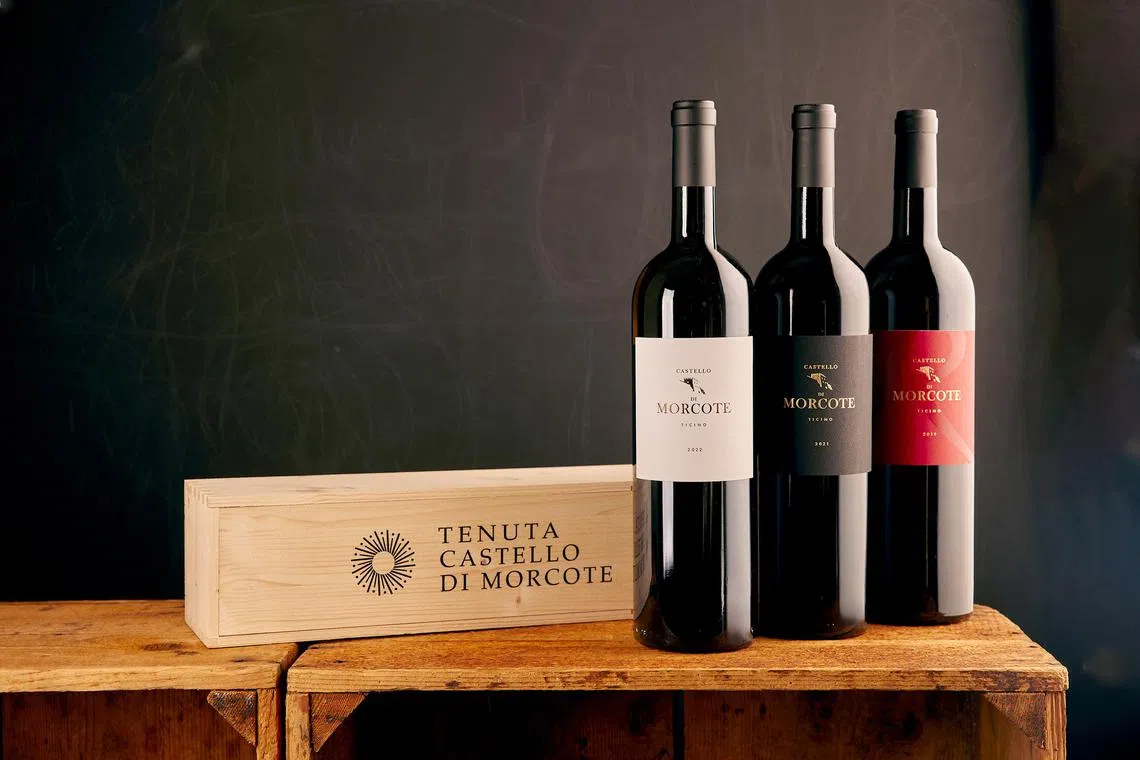
Red wines from Tenuta Castello di Morcote in Ticino.
PHOTO: TENUTA CASTELLO DI MORCOTE
She says: “I almost fell off my chair when my father wanted to rent out the vineyard. I felt I would take care of my grandfather’s land from an early age. This was driven by a desire to carry on what the family has built and out of my love for this land.”
However, she received no help or money from her family, so she learnt winemaking from scratch. Being a woman also made it more challenging to break into the male-dominated industry.
These challenges only fuelled her motivation to master viticulture and wine-making. Her perseverance and commitment to going organic have since paid off, with a slew of wine-making accolades.
An intimate connection with wine
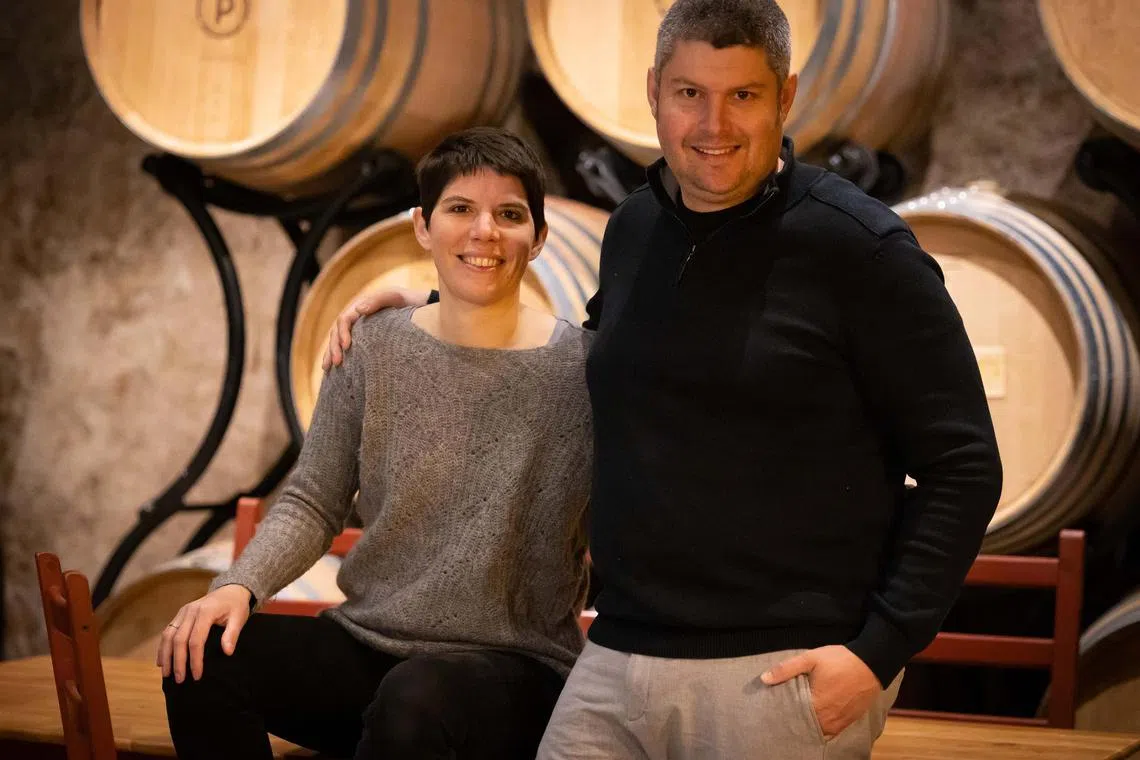
Mrs Eliane and Mr Guillaume Potterat of Domaine Potterat.
PHOTO: DOMAINE POTTERAT
Inspiring stories come up often at winery visits on my trip. According to Mrs Eliane Potterat, who runs Domaine Potterat in Cully, Lavaux, the close-knit manner in which the wineries are run makes Swiss wines special. She says: “You can have a more personal relationship with the winemaker, who is almost like a friend.”
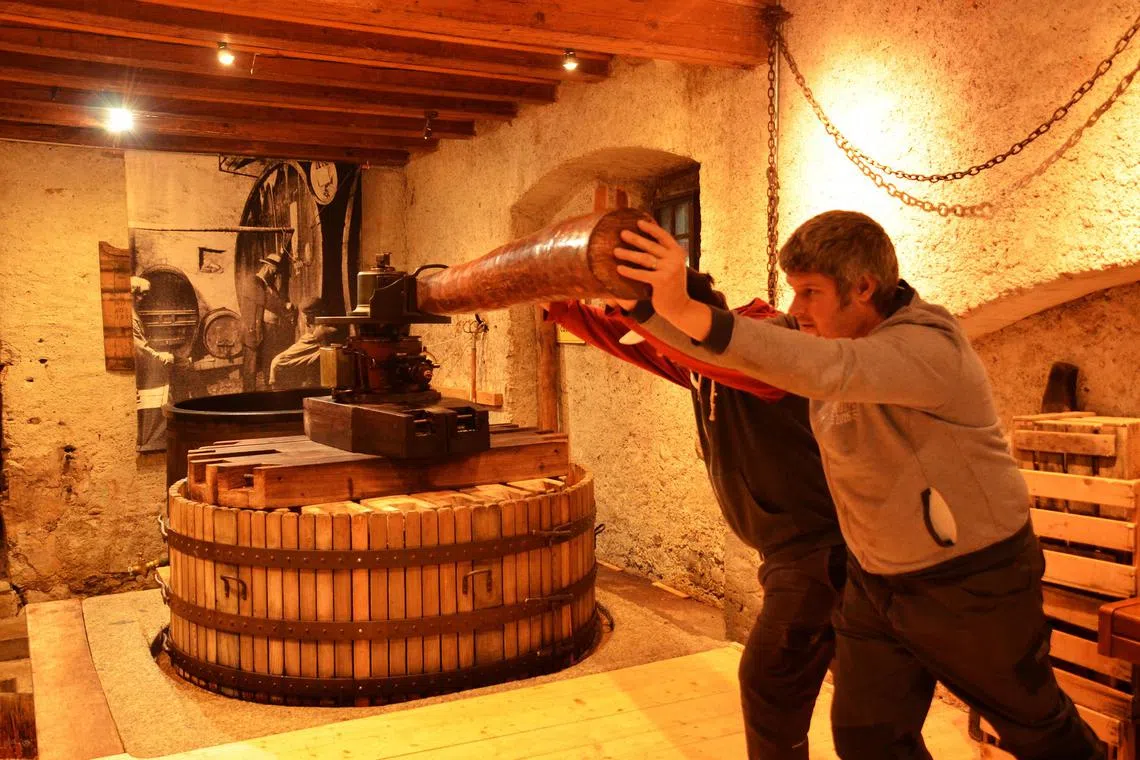
Domaine Potterat’s grape press.
PHOTO: DOMAINE POTTERAT
Tradition is fiercely kept in Domaine Potterat, which has specialised in chasselas since it was run by the Potterat family in the 18th century.
About 70 per cent of its annual production of 30,000 bottles are white wines made from chasselas. Today, the grapes are still manually pressed in a gigantic wooden presser atop a stone foundation that has been around since 1881 before they are transferred into Swiss oak barrels in the cellar.
Highlights of Domaine Potterat’s wine selection include Epesses, a fresh and fruity wine made with chasselas grown on limestone clay soil in the historic terraced vineyards of Lavaux. Courseboux, made with chasselas grown on another land parcel, has a more robust and mineral taste. The Plant Robert, native to Lavaux, bears a light peppery and spicy flavour.
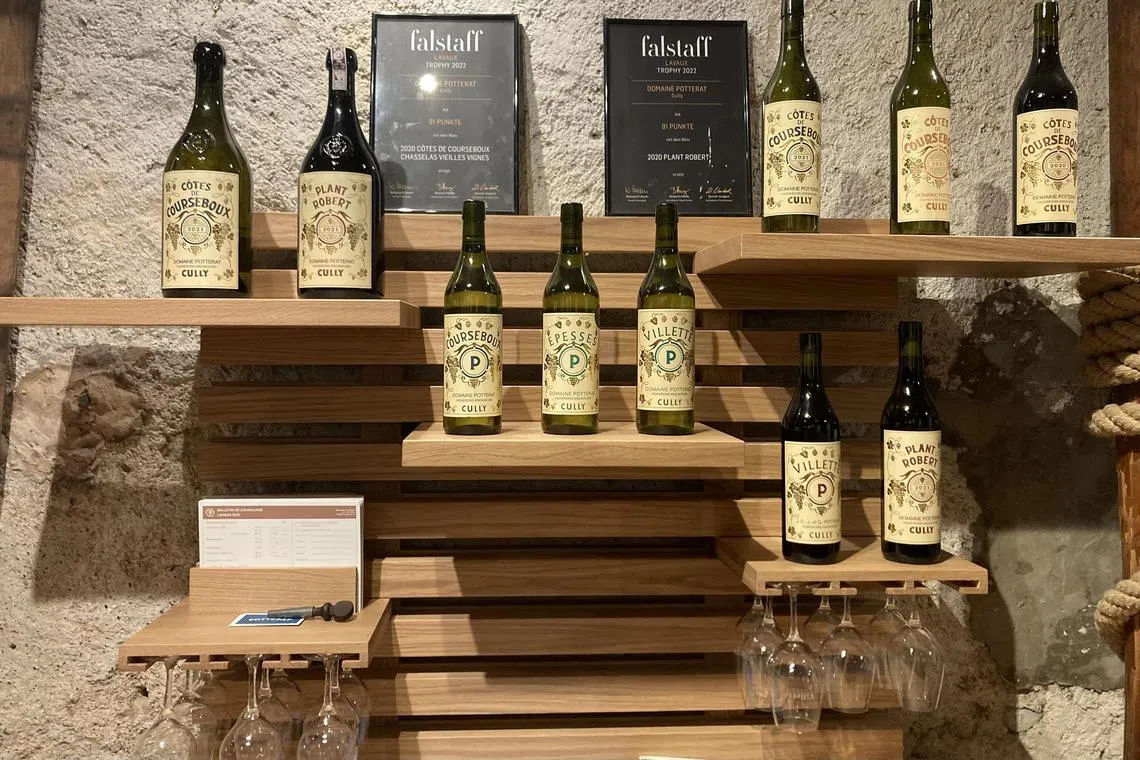
Domaine Potterat’s wine range.
PHOTO: DOMAINE POTTERAT
On what makes chasselas unique, Mrs Potterat says that Lavaux’s famed terraces provide an optimal environment for the grape to thrive. Besides basking in the sun’s reflection from Lake Geneva, the terrace’s stone walls built by monks in the 11th century help preserve the warmth in the soil.
She adds: “Chasselas need a lot of sunlight and warmth to grow. These conditions make the days seem longer, which is important for them to be ripe and aromatic.
“We have a unique topography in Lavaux, with the mountain and the lake. The winemakers are the true heroes of viticulture, who continue this tradition and spread the word to a younger generation of wine drinkers.”
As I pack the wines I bought from the wineries at the end of my trip, I distinctively remember the anecdotes tied to each bottle shared by the winemakers, coupled with memories of a picture-perfect wine trail.
This story was first published in
The Peak
, Singapore’s premier business lifestyle publication, featuring meaningful reads for today’s leaders and visionaries.

